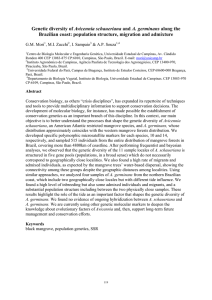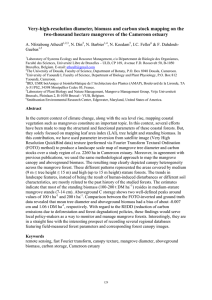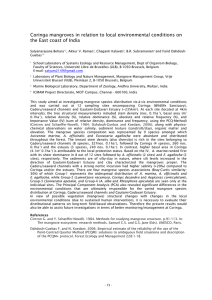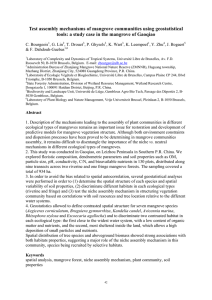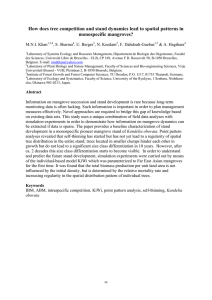Mangrove spatial structure in a monospecific stands of the black... Avicennia germinans A. Nfotabong Atheull
advertisement
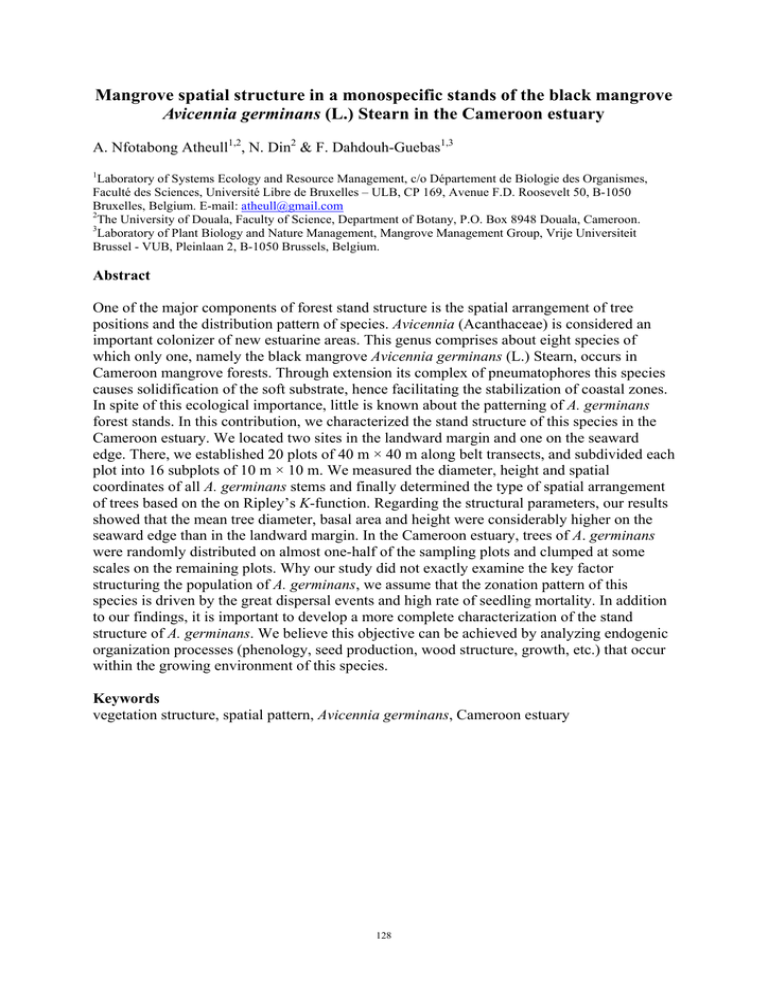
Mangrove spatial structure in a monospecific stands of the black mangrove Avicennia germinans (L.) Stearn in the Cameroon estuary A. Nfotabong Atheull1,2, N. Din2 & F. Dahdouh-Guebas1,3 1 Laboratory of Systems Ecology and Resource Management, c/o Département de Biologie des Organismes, Faculté des Sciences, Université Libre de Bruxelles – ULB, CP 169, Avenue F.D. Roosevelt 50, B-1050 Bruxelles, Belgium. E-mail: atheull@gmail.com 2 The University of Douala, Faculty of Science, Department of Botany, P.O. Box 8948 Douala, Cameroon. 3 Laboratory of Plant Biology and Nature Management, Mangrove Management Group, Vrije Universiteit Brussel - VUB, Pleinlaan 2, B-1050 Brussels, Belgium. Abstract One of the major components of forest stand structure is the spatial arrangement of tree positions and the distribution pattern of species. Avicennia (Acanthaceae) is considered an important colonizer of new estuarine areas. This genus comprises about eight species of which only one, namely the black mangrove Avicennia germinans (L.) Stearn, occurs in Cameroon mangrove forests. Through extension its complex of pneumatophores this species causes solidification of the soft substrate, hence facilitating the stabilization of coastal zones. In spite of this ecological importance, little is known about the patterning of A. germinans forest stands. In this contribution, we characterized the stand structure of this species in the Cameroon estuary. We located two sites in the landward margin and one on the seaward edge. There, we established 20 plots of 40 m × 40 m along belt transects, and subdivided each plot into 16 subplots of 10 m × 10 m. We measured the diameter, height and spatial coordinates of all A. germinans stems and finally determined the type of spatial arrangement of trees based on the on Ripley’s K-function. Regarding the structural parameters, our results showed that the mean tree diameter, basal area and height were considerably higher on the seaward edge than in the landward margin. In the Cameroon estuary, trees of A. germinans were randomly distributed on almost one-half of the sampling plots and clumped at some scales on the remaining plots. Why our study did not exactly examine the key factor structuring the population of A. germinans, we assume that the zonation pattern of this species is driven by the great dispersal events and high rate of seedling mortality. In addition to our findings, it is important to develop a more complete characterization of the stand structure of A. germinans. We believe this objective can be achieved by analyzing endogenic organization processes (phenology, seed production, wood structure, growth, etc.) that occur within the growing environment of this species. Keywords vegetation structure, spatial pattern, Avicennia germinans, Cameroon estuary 128
